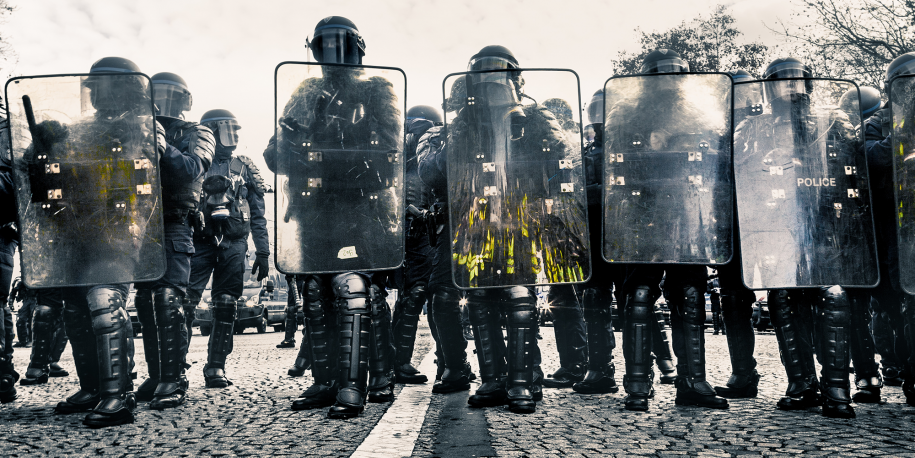
Breadcrumb
- Essential Partners
- Our Impact
- News and Notes
- How Does Power Affect our Conversations?
How Does Power Affect our Conversations?

In a recent conversation with activists on a college campus, student leaders informed our practitioners that student protesters showed little interest in dialogue because they assumed that “dialogue” was an attempt to placate them by the administration. The power of the administration carried both weight and assumptions.
In another of our dialogues, a participant assumed he would have to begin speaking with an apology for his privilege before even participating in the conversation. In both of these instances (and in so many more), real and perceived power differences created profound barriers to meaningful conversation. Perhaps nowhere has that felt truer than following the results of the 2016 election.
When we create spaces for groups to communicate across differences, we run headfirst into questions of power. Indeed, it is impossible to have effective conversations around differences without first having often clumsy conversations about power—conversations where we step on toes and say the wrong thing because we want to do better.
And because we know that having diverse, cohesive, engaged members of a community or institution is not only the right thing to do, it also increases innovation, profit, and community safety.
So here’s what we know.
Power exists
As we bring communities together in conversation, power emerges—both universally and in unique ways. And while we don’t want to unintentionally reinforce or affect existing power structures, seriously addressing power imbalances in dialogue can also feel risky.
Acknowledging power might actually result in more upfront tensions as people speak to their experiences relating to one another.
Power is dynamic
Power can coalesce around knowledge, gender, race, sexuality, personality, age, experience, communication, class, language, education—and so much more. It exists when the newest employee in the office sits in meetings furiously googling unfamiliar acronyms. It exists in older generations struggling to adapt to the newest iterations of office technology.
Power comes into play when wisdom is seen as equivalent to age, when a show of emotion redirects an entire meeting, when a young black man pulled over for texting while driving shakes in fear for his physical safety.
If we aim to have truly effective conversations in our communities, we have to set aside our personal assumptions and design processes specifically to address the concerns we hear around power—real and perceived.
And if we aim to have conversations that build understanding and resilience, we also have a responsibility to listen to the experiences of those concerned about how dialogue addresses issues of power and adapt our model as needed to meet those concerns.
As we discuss issues of power and privilege in our work, we first think about how to structure a conversation that invites engagement from everyone involved. We have to ask genuine questions and listen to what we hear.
Additionally, we have to address the fact that we don’t all communicate the same way—and certain types of communication invite or encourage some people, inhibiting or discouraging others. Often (and largely without malice or ill-intention), those who have the most power decide how conversations happen in their communities or institutions. This can be as simple and automatic as “we’ve always had the administrator present first in meetings.”
When thinking about how to help all participants feel welcome and fully included in the conversation, we should not assume to know how people from other cultures or positions of power will show up and participate. Are interruptions rude or a signal of respect? How do people prefer to convey emotion? In some situations, equal speaking time may convey equality of voice. In other situations, equality of voice may mean ensuring everyone has the time they need to speak or write, whatever that might mean for them.
If we want to address the real issues and divisions in our communities—and reap the benefits of truly diverse thinking and perspectives - we need to design conversations that value the dynamic power of participants.
Ultimately, conversations across identity cannot take place just once. In a one-time conversation, it’s challenging to respond to unexpected hurdles or differences in styles of communication and make adjustments accordingly for the next meeting.
We can also recognize that every community relies on many different conversations to meet different needs. As we help communities invest in conversation with each other, we must be intentional about the range of opportunities we provide for people to engage. We need to listen to the voices of those who feel unheard and respond in a way that serves the group and the purposes.
Most of all, we need to create conversations that help people bring forward their unique sources of power, shaping a path towards a resilient community that embraces the complexity and value of each person. Because when the conversation itself incorporates ways of addressing power and privilege, those clumsy conversations about power in your community become just a little bit easier.
